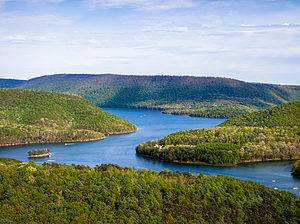Lake Texcoco was a natural lake within the Anahuac, which is the Valley of Mexico. Lake Texcoco is best known for its proximity to Mēxihco Tenōchtitlan, the Aztec Empire’s capital city. Still, times have changed since the Aztecs used it for drinking water, crop irrigation, and fishing. Let’s discover 11 creatures currently living in and around Mexico’s Lake Texcoco.
Brief History of Lake Texcoco
Before we jump into a list of animals living in and near Lake Texcoco, it’s important to understand the geography and history of this once-grand lake. It’s endured human interference on a massive scale, and as a result, the range of animals living there has all but vanished.
Lake Texcoco was once a huge lake, one of five, in the Anahuac. On the western side of this ancient lake, Mexico Tenochtitlan, the capital of the Aztec Empire, thrived for centuries. However, in the 17th century, Spanish conquistadors drained it to prevent flooding.

Is Lago de Texcoco Dry?
Today, nearly all of the lake basin hosts Mexico City.
Due to the lake’s drainage, the climate and water availability have altered so significantly there’s not enough water for the area. As a result, the animals living in and around the lake have mostly fled or died out.
Currently, the lake’s remnants lie just 2.5 miles east of Mexico City, and it’s margined by salt marshes. This 10,000-hectare wetland is now called the Zona Federal Lago de Texcoco (ZFLT – Texcoco Lake Federal Zone). Experts hope to preserve 276 bird species, five amphibians, 14 reptiles, and 29 mammal species there.
New plans suggest Lake Texcoco Ecological Park will eventually transform into the largest park in the world. Mexico’s government and environmentalists hope that in the future, Lake Texcoco’s current animals will flourish and vanished species will return. Currently, there’s no set date for completion.
With that in mind, let’s take a look at animals reportedly residing in and around the remnants of Lake Texcoco.

Mexico City covers most of ancient Lake Texcoco.
©WitR/Shutterstock.com
1. Burrowing Owl (Athene cunicularia)
The burrowing owl is a small nine-inch tall owl with light and dark brown plumage plus long, powerful legs, but that’s where the similarities with standard owls stop! Burrowing owls are active during the day, hunt on the ground, and live in burrows beneath the soil. They’re fairly common throughout North America, but threatened in Mexico’s open dry landscapes, including the desertified areas surrounding Lake Texcoco.
Burrowing owls re-purpose abandoned burrows built by squirrels, prairie dogs, tortoises, and coyotes. They often add feces that attract their favorite insect dinners! Alongside insects, carnivorous burrowing owls dine on snakes, small birds, lizards, and mice. To catch their prey, they hover, hop, and full-on sprint using their long, powerful legs.
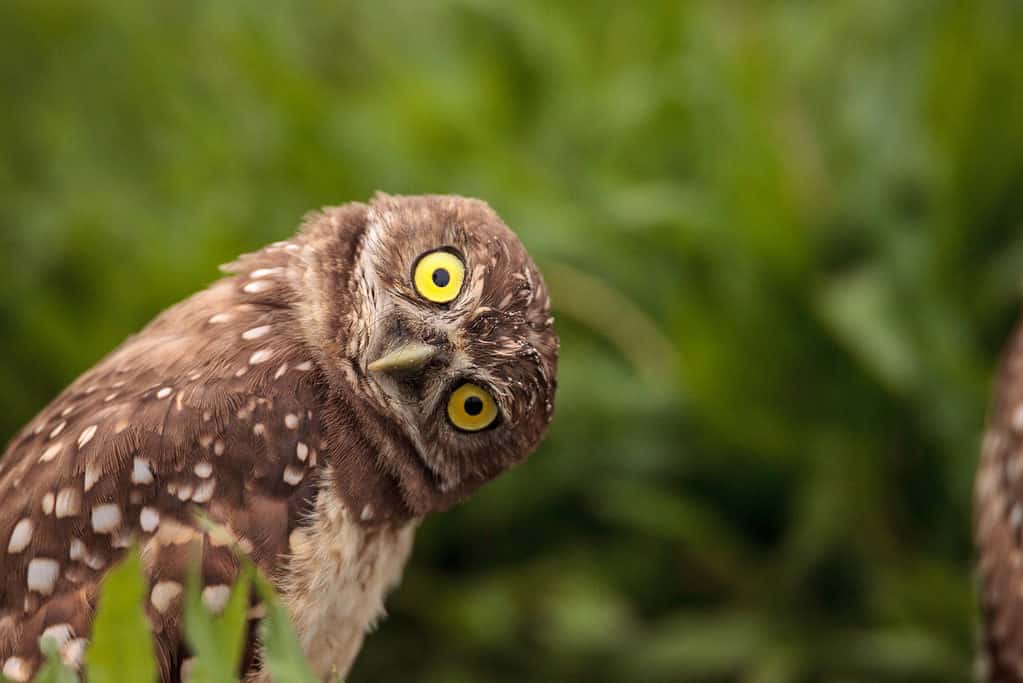
Burrowing owls re-use coyote,
tortoise
, and prairie dog burrows.
©Bildagentur Zoonar GmbH/Shutterstock.com
2. Mexican Tree Frog (Smilisca baudinii)
Nocturnal Mexican tree frogs, also called Baudin’s tree frogs and Van Vilit’s frogs, live near water sources in forested areas.
Tree frogs differ from terrestrial frogs that we see in ponds. The most obvious difference is their toes, which have claw-shaped bones and tiny suction pads. This helps them climb vertical surfaces and move across trees safely. They’re also light, slimmer, and cuter looking with large eyes and an upturned mouth.
Brown and green Mexican tree frogs have lighter bellies and dark brown banded legs. They prey on insects such as crickets and moths, plus worms and small invertebrates at night. Adults reach around an inch in length, which makes them small to medium-sized in the world of tree frogs.
At mating time, Mexican tree frogs make a series of honking noises to attract a mate, but when faced with a predator such as a snake or bird, they emit a high-pitched scream.
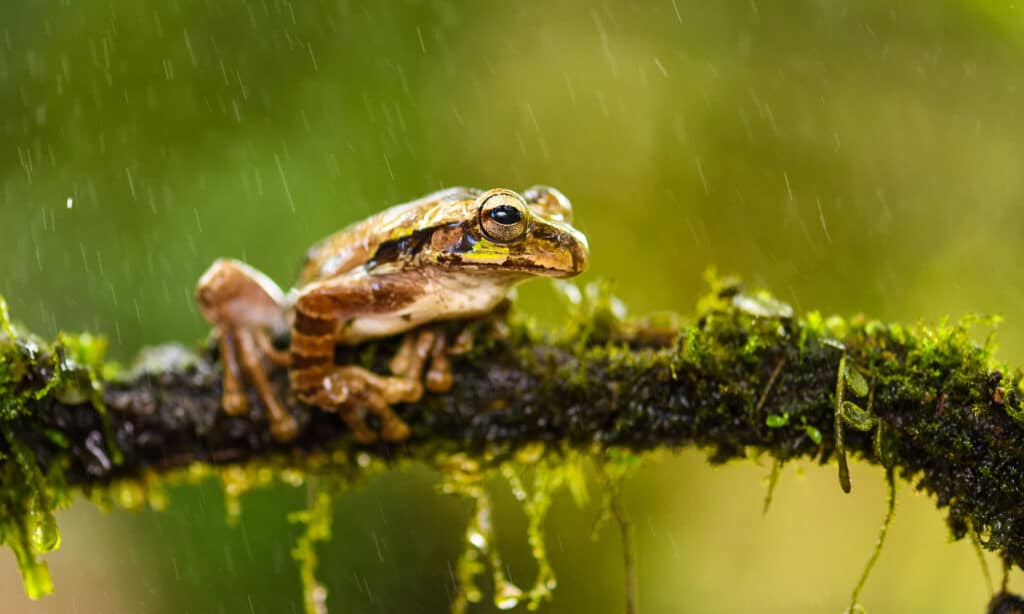
Mexican tree frogs have tiny suction pads that enable them to cling onto leaves.
©petrdd/Shutterstock.com
3. American Avocet (Recurvirostra americana)
Lake Texcoco’s remnants provide homes and temporary resting ground to many birds; at least 30 shorebird species are recorded there, including the black and white plumaged American avocet.
American avocets are large 20-inch-long wading birds that spend time foraging in shallow mud for insects and crustaceans. They sweep their large bills side to side, scooping out and filtering mouthfuls of rich silt and mud. An American avocet’s bill is black, pointed, curved, and at least twice the length of its head.
This handsome bird is often called blue shanks due to its long, sinewy, pastel blue legs that barely disturb the mud it hunts through.
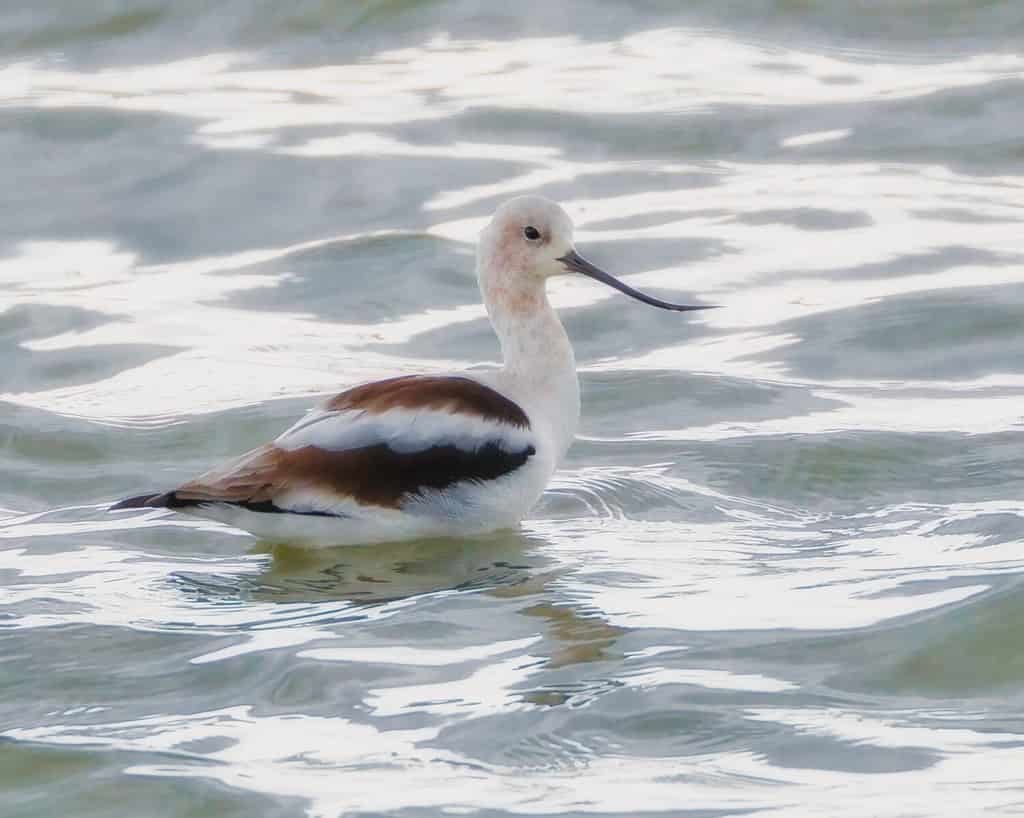
American avocets have long beaks used to filter crustaceans and mollusks.
©J. S. Fisher/Shutterstock.com
4. Snowy Plover (Charadrius nivosus)
At the opposite end of the size scale is the snowy plover. It’s another wading shorebird but a diminutive five inches tall!
In central California and Oregon, beach restrictions in certain areas protect these near-threatened birds, and Lake Texcoco’s restoration project hopes to support them, too. The current Texcoco shorebird project ringed a Lake Texcoco snowy plover in 2010 and found it two years later 1,118 miles distant in Oklahoma. The lake manager records the population of shorebirds each month to assess environmental conditions.
Snowy plovers have white bellies and pale brown upper sides. They breed on sandy coasts and brackish lake margins. Cold-area residents migrate to warm countries such as Mexico and California.
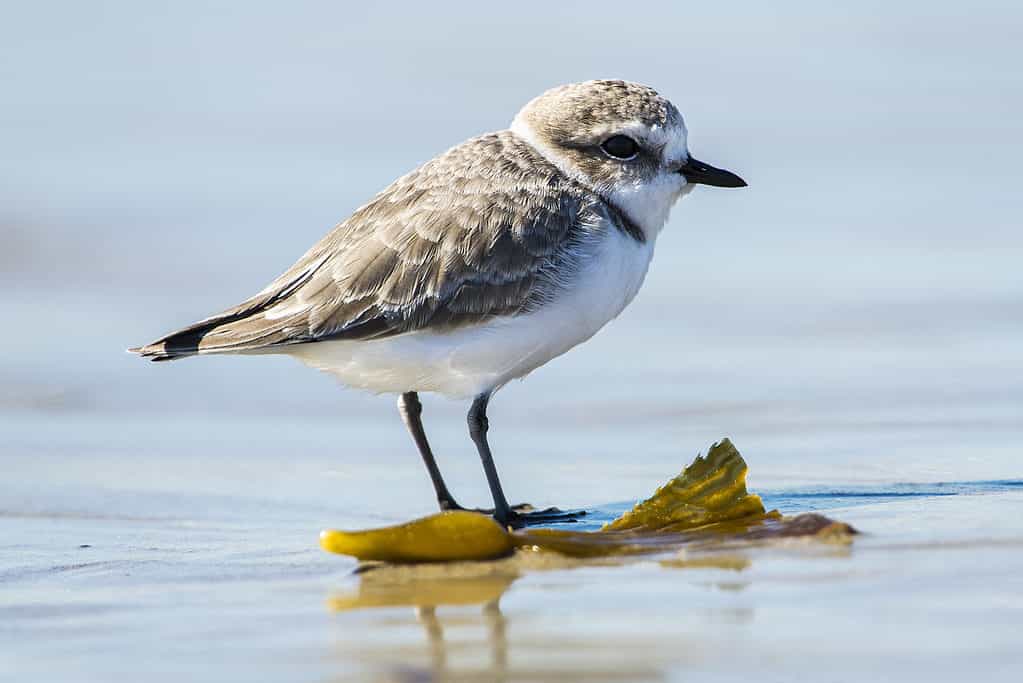
Snowy Plover numbers are monitored at Lake Texcoco to measure the environment’s health.
©iStock.com/drferry
5. Ducks
Lake Texcoco is a hotspot for resident ducks and duck migration routes.
The pintail, ruddy duck, American wigeon, canvasback, brown teal, blue-winged teal, and the greater scaup are just a few of the duck species using Lake Texcoco and its surrounds on their long journeys.
Migrating ducks don’t fly thousands of miles without a break; their journey is segmented into stopovers, and Lake Texcoco is an important pitstop. A few species stay for months. Others move on after a week or two.
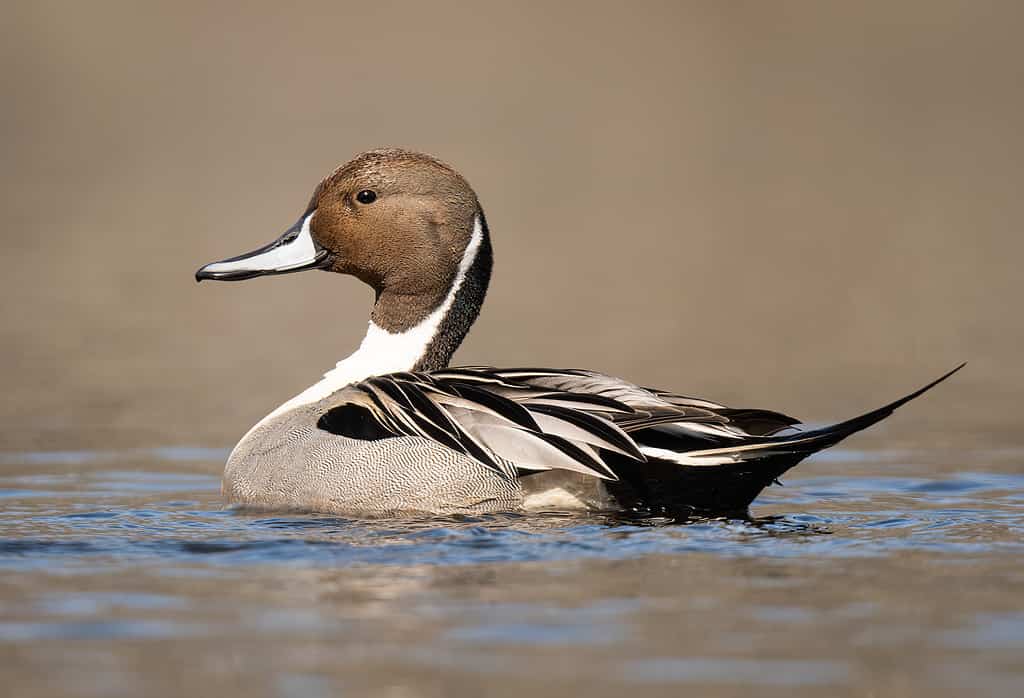
Ducks like this pintail duck use Lake Texcoco as a migration pitstop.
©iStock.com/Irving A Gaffney
6. American Desert Hare (Lepus californicus)
All creatures need to drink, and mammals are no exception. Hares live in the bushes near Lake Texcoco to take advantage of its water. In Mexico, the desert hare is best known as the black-tailed jackrabbit.
This fast-sprinting hare reaches two feet long and weighs up to six pounds. It’s one of the America’s largest hares. They enjoy shrubby grasslands and dry prairie terrain, where they eat grasses, shoots, and flowers.
Desert hares have immensely long and powerful back legs and the characteristic long ears of all hare species. Their powerful back legs enable a turn of speed that reaches more than 40 mph, enough to outrun coyotes, foxes, and wildcat predators.
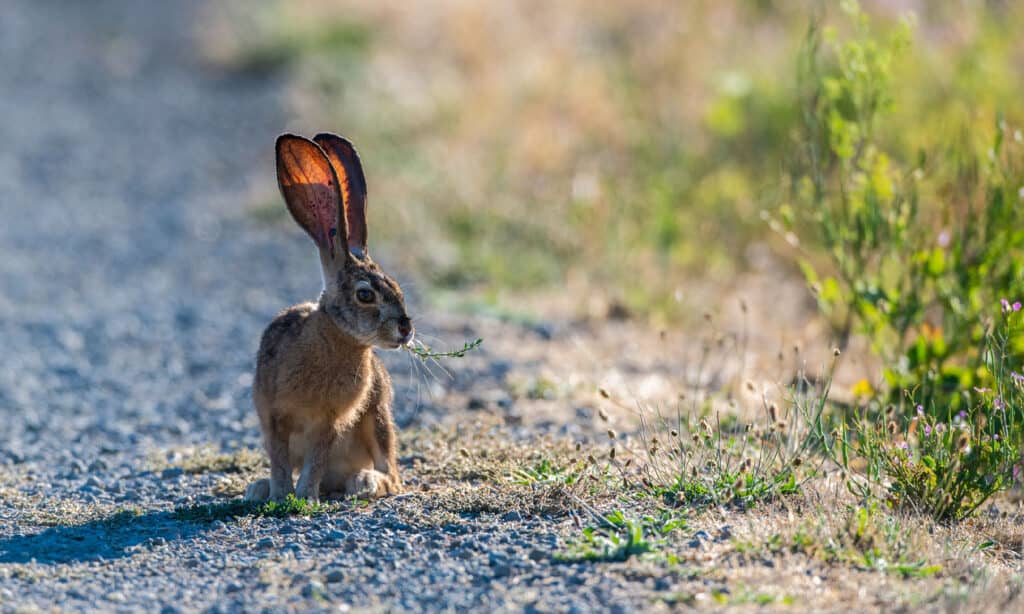
American desert hares can run at speeds of 40 mph to evade coyotes, birds of prey, and wildcats
©iStock.com/zhuclear
7. South American Black Widow
In the dry layers of soil, cement, vegetation, shreds of salt concentration, and especially the lightweight volcanic rock laid down millions of years ago, black widows hunt unfortunate insects.
In Mexico, these venomous spiders are chiefly one of two species, either Atrodectus corallinus or Latrodectus curacaviensis.
Like other black widow species, females are much larger than males. Near Lake Texcoco, females reach half an inch long with black and red markings. Brown and white males chiefly reach half this.
Mexico’s black widow spiders are usually nocturnal. They hunt small insects, and although their bite is not usually fatal, medical treatment is necessary. Black widow bite symptoms include pain, sweating, rapid breathing, and swollen eyelids. It’s one of the few dangerous animals living near Lake Texcoco.
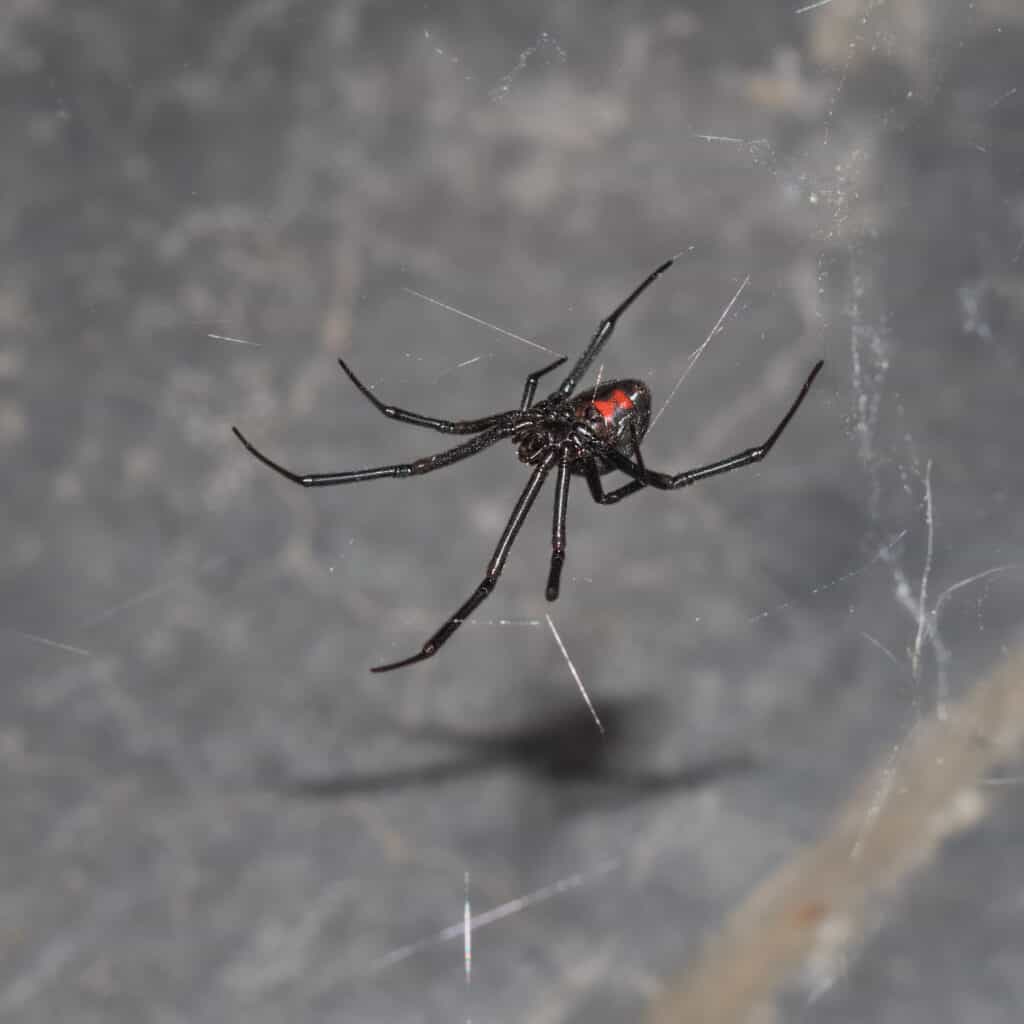
Several species of black widow live around Lake Texcoco beneath rocks and in crevices.
©iStock.com/Shravan Sundaram Photography
8. Axolotl (Ambystoma mexicanum)
We can’t write about Mexican animals without including the cute amphibian axolotl, which has catapulted to fame due to its recent Minecraft inclusion.
The Mexican salamander is endemic to the Lake Texcoco lake system, but it’s not known if any currently reside there. Aztec people regularly ate axolotl before the lake was drained, but today, they’re endangered due to habitat destruction.
Axolotls, often called walking fish, are of interest to scientists because they can generate new limbs, eyes, and brain parts. Carnivorous axolotls eat worms, small fish, arthropods, and mollusks. They suck prey into their mouth using a powerful vacuum force.
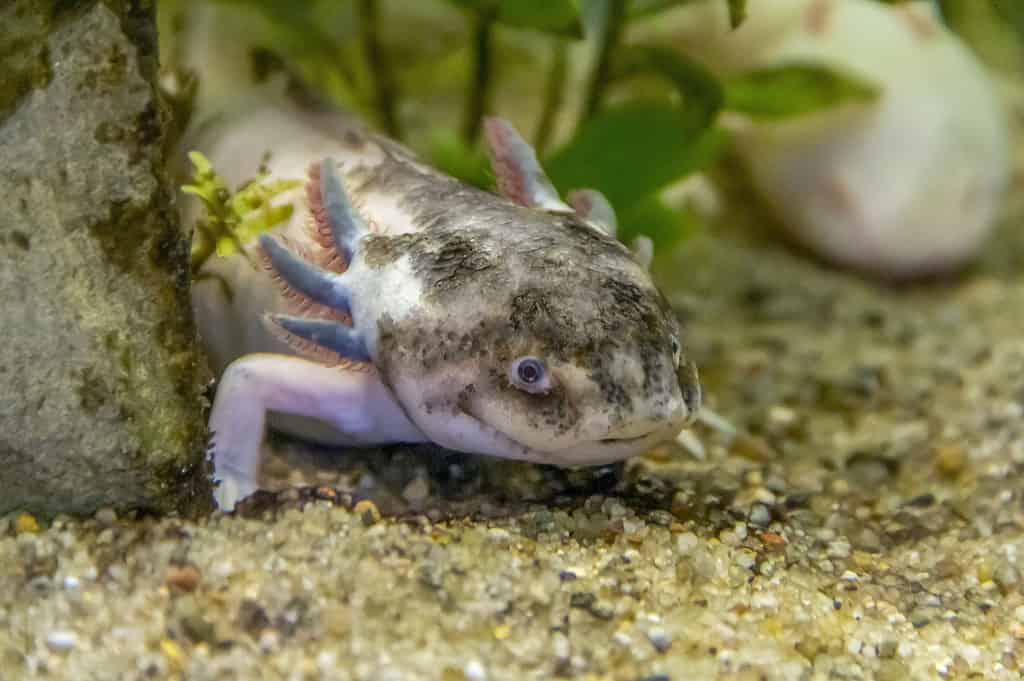
Axolotl are endemic to Mexico. They can regenerate lost limbs!
©iStock.com/prill
9. Rough-Necked Alligator Lizard (Barista rudicollis)
This endangered lizard is endemic to Mexico and one of the animals the regeneration project is looking to support.
It’s part of the Anguidae family and medium-sized compared to other alligator lizards, but rarely seen. This uncommon lizard lives in forested areas beneath loose bark, piled logs, and fallen trees. It preys on small mammals, insects, and mollusks.
Relatively unknown, the rough-necked alligator lizard is under threat due to fragmented habitats. It’s a viviparous species, which means it doesn’t lay eggs but gives birth to live young.
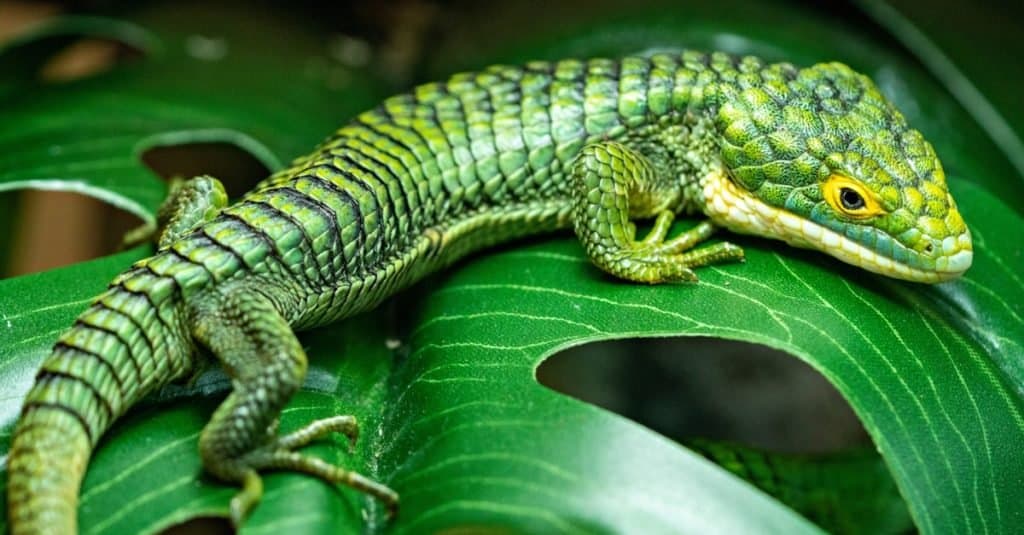
Like this Mexican alligator lizard, the rough-necked species is rarely seen.
©Wesley Aston/Shutterstock.com
10. Mexclapique (Girardinichthys viviparus)
This live-bearing endangered fish is endemic to Mexico and large numbers once lived in Lake Texcoco’s river systems. Today, after the lake drainage, it’s only found in a few water bodies. One of these places is the remnants of Lake Texcoco. Other spots include lakes Tecocomulco, Chalco, and Xocjimilco.
Adult female mexclapiques reach two and a half inches long, but the males are slightly smaller. Both genders have brown backs, white bellies, and white stripes. They prefer to hide out in shallow areas of lakes, ditches, and canals with lots of vegetation cover, feeding on small invertebrates and insect larvae.
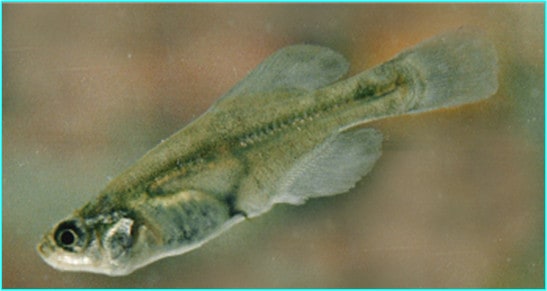
Large numbers of Mexclapiques once lived in Lake Texcoco’s river systems. Today, after the lake drainage, they are only found in a few water bodies and are endangered.
©Juan Cruzado Cortés, CC BY-SA 4.0 <https://creativecommons.org/licenses/by-sa/4.0>, via Wikimedia Commons – License
The photo featured at the top of this post is © Andrea Izzotti/Shutterstock.com
Thank you for reading! Have some feedback for us? Contact the AZ Animals editorial team.





